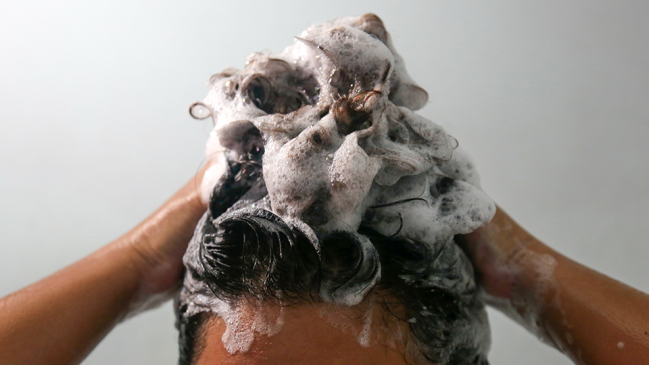🔄
Have you ever noticed that your skin sometimes looks more wrinkled than other times? One common reason for this are what are called “dehydration lines,” or shallow lines and creases that show up on your skin when it lacks moisture. The good news is that dehydration lines are temporary and will go away once you properly rehydrate your skin.
However, other types of wrinkles can be more challenging and take longer to improve. Learn more about dehydration lines vs. wrinkles, including how to tell the difference between them and how to improve the appearance of each one.
Dehydration lines are caused by a lack of moisture.
Wrinkles are caused by a lack of collagen and elastin.
Use hydrating and anti-aging skin care designed for your skin type to treat dehydration lines and regular wrinkles.

What Are Dehydration Lines?
Dehydration lines are fine, shallow lines or wrinkles that show up on your skin when it lacks moisture. When the outermost layer of skin loses its moisture, the skin’s surface shrinks slightly, forming faint lines. These lines may appear across your cheeks, under your eyes, or on your forehead when your skin is dry or stressed. Unlike other types of wrinkles, dehydration lines are not caused by a lack of collagen due to aging and can be reversed by rehydrating your skin.
How to Treat Dehydration Lines
Dehydrated skin is a sign of an impaired skin barrier , which can be caused by traveling on a plane, weather changes, using the wrong skin care products, or other factors. The key to treating dehydration lines is to repair the skin barrier so that it can hold onto water and remain hydrated. Use a barrier repair moisturizer formulated with equal parts ceramides, lipids, and fatty acids to strengthen and repair the skin barrier.
While hyaluronic acid serums and creams are popular, it is important to note that hyaluronic acid only hydrates the skin while it is present on the skin and while it has moisture to draw from. If used without an occlusive ingredient to seal that moisture inside of the skin, hyaluronic acid can pull moisture from inside the skin, worsening dryness.
Other hydrating ingredients in skin care include:

Lines That Suddenly Appear on the Skin After a Peel or Burn
If you burn your skin in the sun or with an irritant or chemical peel, this damages the skin’s top layer called the stratum corneum. It looses it attachment to the lower layers of the skin in it’s attempts to desquamate off of the skin surface. This give the skin a wrinkled tissue paper look that make it look like your skin aged overnight. You skin can feel stiff dry and rough. I have had patients come into my office in a panic thinking that they have permanently damaged their skin.
The good news is that this top wrinkled layer of skin will exfoliate away. You need to wait a day until it separatees a bit more from the skin. You do not want to force it. Then you can gently use an exfoliant to remove these top wrinkled skin layers.

What Are Real Wrinkles vs Dehydration Lines?
Wrinkles are deeper, more permanent lines formed by a loss of structural proteins like collagen and elastin. Collagen provides firmness, while elastin gives the skin its bounce. As we age, production of both proteins slows down. Wrinkles can also form from repetitive facial expressions, sun damage, smoking, and air pollution.
-
Dynamic wrinkles form from repeated muscle movement, like frown lines or crow’s feet.
-
Static wrinkles are present even when your face is at rest. These are typically deeper than dynamic wrinkles.
Other types of wrinkles include those from sagging loose skin from loss of loss of elastin.

How to Treat Wrinkles
Unlike dehydration lines, wrinkles caused by a loss of collagen and elastin are not temporary and require the right skin care ingredients to increase collagen and slow the aging process.
The best way to treat wrinkles is to use a personalized skin care regimen that is designed for your specific skin type. Some skin types can tolerate anti-aging ingredients like retinoids easier than others. Generally speaking, however, below are some of the most effective anti-aging ingredients to get rid of wrinkles:
Bottom Line
Dehydration lines are caused by a lack of moisture and are temporary – once you rehydrate your skin, they will fade away and your skin will look smoother. Regular wrinkles are caused by a lack of collagen and elastin and are not temporary. However, there are anti-aging skin care ingredients like retinoids, vitamin C, and growth factors that can help to increase collagen production and smooth away static and dynamic wrinkles.
The key to getting rid of lines and wrinkles is first knowing the type and underlying cause and then following a customized skin care regimen designed for your skin type.

How do I tell the difference between wrinkles and dehydration lines?
Dehydration lines are usually fine, shallow, and appear suddenly. They can look like crepey or criss-crossed lines. Wrinkles are typically deeper, more defined, and form gradually over time.
How long do dehydration lines last?
With proper hydration and barrier repair, dehydration lines can start to fade within hours to days. However, if the skin remains dry or the environment is harsh, they can stay on the skin longer.
Does drinking more water help with dehydration lines?
Drinking more water can help with skin hydration, particularly if you do not typically drink enough water and if your skin barrier is healthy enough to be able to retain moisture. If you have an impaired skin barrier that does not hold onto water well, drinking more water is unlikely to fix dry skin. Instead, you need a barrier repair moisturizer, combined with healthy habits like drinking enough water and getting enough sleep.
Why do my wrinkles look worse some days?
Wrinkles can look more prominent when your skin is dehydrated, inflamed, or under stress. Poor sleep, sun exposure, allergies, eating salty food, and drinking alcohol can cause puffiness or water loss, exaggerating fine lines.
Best References and Scientific Publications on Dehydration Lines vs. Wrinkles
- Baumann L. Antiaging Ingredients in Ch. 37 of Baumann’s Cosmetic Dermatology Ed 3. (McGraw Hill 2022)
- Baumann, L. Ch. Cosmeceuticals and cosmetic Ingredients (McGraw Hill 2015)
- Rull, M., Davi, C., Canadas, E., Alminana, N., & Delgado, R. (2013). Keeping skin hydrated: both inside & out: dry skin causes itching, desquamation and inflammation, and can ultimately lead to wrinkles and fine lines. Here’s a way to improve water transport within the skin to minimize dehydration. Household & Personal Products Industry, 50(9), S28-S28.
- Choi, J. W., Kwon, S. H., Huh, C. H., Park, K. C., & Youn, S. W. (2013). The influences of skin visco‐elasticity, hydration level and aging on the formation of wrinkles: a comprehensive and objective approach. Skin Research and Technology, 19(1), e349-e355.
- Bize, C., Le Gélébart, E., Moga, A., Payré, B., & Garcia, C. (2021). Barrier disruption, dehydration and inflammation: Investigation of the vicious circle underlying dry skin. International journal of cosmetic science, 43(6), 729-737.
- Verdier‐Sévrain, S., & Bonté, F. (2007). Skin hydration: a review on its molecular mechanisms. Journal of cosmetic dermatology, 6(2), 75-82.
Share
Comments











